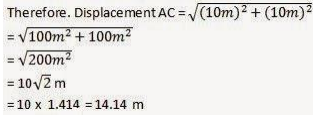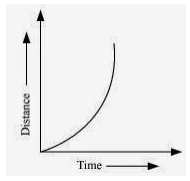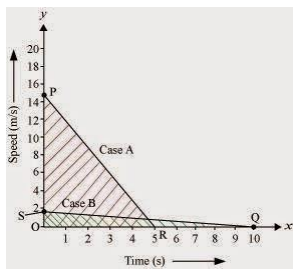CLASS 9 Science
CHAPTER 15
Improvement in Food Resources (NCERT Solution)
Intext Questions
On Page 204
Question 1: What do we get from cereals, pulses, fruits and vegetables?
Answer: The things we get from cereals, pulses, fruits and vegetables are as follows:
Cereals(wheat, rice, maize, etc.): are the sources of carbohydrates which provide energy.
Pulses(pea, gram and soybean, etc.): are source of proteins.
Vegetables and fruits: provide us vitamins, minerals, carbohydrates, proteins and fats.
On Page 205
Question 1: How do biotic and abiotic factors affect crop production?
Answer: Factors which affect crop production are:
Biotic factors which cause loss of grains are rodents, pests, insects, etc. and abiotic factors, such as temperature, humidity, moisture, etc.
Affects of both biotic and abiotic factors on crop production are in the following ways:
Weight loss
Infestation of insects
Poor germination ability
Discoloration
Question 2: What are the desirable agronomic characteristics for crop improvement?
Answer: Desirable agronomic characteristics are:
Desirable characters for fodder crops are tallness and profuse branching
Dwarfness is desired in cereals, so that fewer nutrients are consumed by these crops.
On Page 206
Question 1: What are the macronutrients and why are they called macronutrients?
Answer: Macronutrients are essential elements which are required by plants in major quantities.
Some of the main macronutrients are:
(i) N, P, S which are found in proteins.
(ii) Ca is found in cell wall.
(iii) Mg is a part of chlorophyll.
Question 2: How do plants get nutrients?
Answer: Soil is the main source of nutrients for plants. Plants absorb the dissolved nutrients by the roots from the soil. This water absorbed by the roots is transported by the xylem tissue throughout the plant body.
On Page 207
Question 1: Compare the use of manure and fertilisers in maintaining soil fertility.
Answer: Use of manure in maintaining soil quality:
(i) Manures are the very rich source of organic matter (humus) for the soil. Humus helps to restore water retention capacity of sandy soil and drainage in clayey soil.
(ii) Manures are the sources of soil organisms like soil friendly bacteria.
Use of fertilisers on soil quality
(i) Excess use of fertilisers cause to dryness of soil and hence the rate of soil erosion increases.
(ii) Continuous use of fertilisers decreases the organic matter which reduce the porosity of the soil and the plant roots do not get sufficient oxygen.
On Page 208
Question 1: Which of the following conditions will give the most benefits? Why?
(i) Farmers use high-quality seeds, do not adopt irrigation or use fertilisers.
(ii) Farmers use ordinary seeds, adopt irrigation, use fertilisers and use crop protection measures.
(iii) Farmers use quality seeds, adopt irrigation use fertilizer and use crop protection measures.
Answer: The (iii) third option is the best option which provides the best conditions to get most benefits. For this, farmers use quality seeds, adopt irrigation, use fertilizers and use crop protection measures. This is because the use of only quality seeds is not sufficient until they are properly irrigated, enriched with fertilizers and protected from biotic factors.
On Page 209
Question 1: Why should preventing measures and biological control methods be preferred for protecting crops?
Answer: In plants, diseases are caused by Pathogens. To remove pathogens, some preventive measure and biological control methods are used which are :
Minimise pollution without affecting the soil quality.
Question 2: What factors may be responsible for the losses of grains during storage?
Answer: Following are the factors responsible for loss of grains during storage:
(i) Abiotic factors like humidity and temperature.
(ii) Biotic factors like insects, rodents, birds, mites and bacteria.
On Page 210
Question 1: Which method is commonly used for improving cattle breeds and why? How is cross breeding useful in animals?
Answer: To improve the cattle breed breeds, we generally use the cross breeding method. It is a process in which a cross is made between indigenous varieties of cattle by exotic breeds to get a cross breed which is high-yielding. During cross breeding, the desired characters taken into considerations are the offsprings should be high Yielding, should have early maturity and should be resistant to diseases and climatic conditions.
On Page 211
Question 1: Discuss the implications of the following statement It is interesting to note that poultry is India's most efficient converter of low fibre food stuff (which is unfit for human consumption) into highly nutritious animal protein food.
Answer: The poultry birds are efficient converters of agricultural by products, particularly cheaper fibrous wastes into high quality meat and in providing egg, feathers and nutrient rich manure. So, the given statement is correctly said for the poultry birds.
Question 2: What management practices are common in dairy and poultry farming?
Answer: Well designed and hygenic shelter.
Proper food is required to get good yield of egg and meat.
Complete protection from diseases causing agents like virus, bacteria or fungi.
Question 3: What are the differences between broilers and layers and in their management?
Answer: The poultry bird giving meat are called broilers and the egg laying birds are called layers.
The ration required for broilers should be rich in protein with sufficient fat. The food should also have high vitamin-A and K. Layers require enough space and lighting.
On Page 213
Question 1: How are fish obtained?
Answer: Fish are obtained by two ways:
(i) Capture fisheries from natural resources
(ii) Fish farming by culture for commercial purposes.
Question 2: What is the advantage of composite fish culture?
Answer: Combination of five or six fish species in a single fish pond is known as composite fish culture. Basis of selection of species is food habits so that they do not compete for food among themselves. As a result, the food available in all parts of the pond is utilized without competing with each other. This increases the fish yield from the pond.
Question 3: What are the desirable characters of the varieties suitable for honey production?
Answer: Desirable characters in varieties for honey production are:
(a) Capacity to collect a large amount of honey.
(b)Should stay in beehive for a longer time.
(c) Should have good breeding capacity.
Question 4: What is pasturage and how is it related to honey producton?
Answer: Flowers available for nectar and pollen collection is known as pasturage . The quality and taste of honey depends on adequate quantity of pasturage and flowers available.
Exercises
Question 1: Explain anyone method of crop production which ensures high yield.
Answer: Inter cropping is a method used for a high yielding crop production. In this method, two or more crops are grown simultaneously on the same field in definite pattern. A few rows of one crop alternate with a few rows of second crop.
Example: soybean, maize or finger millet (bajara) and caw pea (labia).
The selected crops should have different nutrient requirements. This ensures maximum utilisatian of the nutrients supplied. It also prevents pests and diseases from spreading to all the plants belonging to one
crop in a field. This method gives a better crop yield.
Question 2: Why are manure and fertilizers used in fields?
Answer: The essential nutrients of the soil are full filled by manures and fertilizers supply. Therefore, they help in good vegetative growth, giving rise to healthy plants that rise in high crap production.
Question 3: What are the advantages of inter-cropping and crop rotation?
Answer: Advantages of inter-cropping
Maintain soil fertility.
Save time and labour.
Increases productivity per unit area.
Both crops can be easily harvested and threshed separately.
Advantages of crop rotation
Improves soil fertilitiy.
Reduces pest infestation and diseases. Helps in weed control.
Avoids depletion of a particular nutrient from soil.
Question 4: What is genetic manipulation? How is it useful in agricultural practices?
Answer: Transferring desirable genes from one plant to another plant far the production of varieties with desirable characters is known as genetic manipulation.
Example: Profuse branching in fodder craps, high yielding varieties in maize wheat, etc.
Uses in agricultural practices:
Better adaptability to adverse environmental conditions.
Contain desirable features.
Helps in increasing yield and quality.
Maturation period is shorter.
Question 5: How do storage grain losses occur?
Answer: The main reason for the losses of storage grain is abiotic and biotic factors.
The abiotic factors: Moisture and temperature
The biotic factors: Insects, rodents, birds, mites and bacteria.
Question 6: How do good animal husbandry practices benefit farmers?
Answer: Benefits of good farming practices:
(i) It provides improved breeds of domestic animals.
(ii)It increase the production of products like milk, egg and meat.
(iii) Proper shelter, feeding, care and protection against disesase help
the farmers to improve their economic conditions.
Question 7: What are the benefits of cattle farming?
Answer: Benefits of cattle farming
(i) Milk production is increased.
(ii) Good quality meat, fibre and skin is obtained.
(iii) Goad breed of draught animals can be obtained.
Question 8: For increasing production, what is common in poultry, fisheries and bee keeping?
Answer: Cross breeding is a common practice between poultry, fisheries
and bee keeping for increasing production.
Question 9: How do you differentiate between capture fishing, mariculture and aquaculture?
Answer: Differences between capture fishing, mariculture and aquaculture
Fishing
1.Fish are obtained from natural resources, like ponds, canals, rivers,
2.I Locating fish is easy and can be captured by using fishing nets.
Mariculture
1.A method of marine fish culture in the open sea.
2.Fish can be located with the help of satellites and echosounders.
These can be caught by many kinds of fishing nets using fishing boats.
Aquaculture
1.Production of fish from freshwater and brackish water resources.
2.Can be located easily and caught using fishing nets.
( From www.ncrtsolutions.in )















